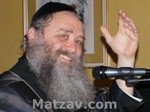 By Rav Shmuel Brazil
By Rav Shmuel Brazil
Bilam said concerning Klall Yisrael Behold the people will arise like a lion cub and raise itself like a lion [Balak 23’24] Rashi comments that when Yidden arise in the morning they arise like a lion cub and lion to grab mitzvos, talis, shemah, tefillin. Why is awakening in the morning to fulfill mitzvos and these mitzvos in particular, compared to the aryeh? I would like to suggest an interpretation based on a Zohar in Shmos 5 b that if people would merely understand the depth of Hashem’s love for Yisrael they would roar like a lion to run after Him. According to this interpretation, our likeness to the lion is not compared to our possession of his strength [gevurha and middas yirah] to overcome one’s laziness in awakening in the morning but rather to demonstrate one’s reciprocal emotion of love towards Hashem and the fulfillment of His mitzvos.
When we recite a beracha prior to fulfilling Hashem’s command, we say the nusach asher kidashanu bemitzvosov. The Sefas Emes asks why did our chachamim institute the mentioning of the general holiness we received from all the mitzvos? Why could we not just mention asher kidashanu bemitvas tefillin or tzitzis going directly by mentioning only the mitzvah at hand? The Sefas Emes answers that this general introduction is really specific for it is referring to the two particular mitzvos of the love and fear of Hashem. In the Zohar is says that these emotions of love and fear of Hashem must be attached to every mitzvah performance for these are the wings whi ch carry the mitzvos high to their right place. By saying asher kidshanu bemitvosav one must arouse within himself these two emotions to create the existence of wings for the mitzvah he is about to fulfill. In this way we are likened to the lion that we perform mitzvos with both of these emotions
When the angel of Esav fights with Yaakov avinu, the Torah describes this battle in the words of ויאבק איש עמו and a man wrestled with him. Our chazal say that ויאבק finds its roots in the word avak which means dust. The wrestling was so fierce that they raised dust from the ground which reached the kisay hakavod. We can say that their spiritual battle was not about fulfilling the mitvzos but rather the manner in which they are fulfilled, with or without the love and fear of Hashem. For the angel of Esav understood very well that with out love and fear of Hashem the mitzvos won’t get too much mileage. That is why we find in the acronym of the word אבק”- ר”ת אשר קדשנו במצוותיו” . Fighting on this issue caused that their battle symbolically reached the kisay hakavod. For Yaakov fought on behalf of Klal Yisrael to preserve the attachment of these very emotions of love and fear of Hashem to the performance of every mitzvah in order to create the wings that will carry the mitzvos all the way to the kisay hakavod.
The acronym for lion ארי is אהבה יראה רם that via the emotions of love and fear in the fulfillment of mitzvos one’s mitzvos have wings and rise high wards רם . ארי also is the roshei taivos of the three limbs of a person: the ears אזן the רגלים and the ידים all three necessary in creating wings for one’s mitzvos symbolized by the lion. Every mitzvah must involve the sense of hearing as the passuk consistently uses the term והיה אם שמוע תשמעו that one must listen to the inner meaning of the mitzvah and not fulfill it through rote and=2 0habit alone which is the opposite of love and fear of Hashem. This is hinted in the mitzvah of Shema which sensitizes one to the sense of hearing needed in the creation of wings..
Another limb that is integral in the fulfillment of “winging” the mitzvos are the hands, one right which represents the middah of love and one left which symbolizes the middah of fear. The hands represent the action of the mitzvah, that one must ascertain that it was done with love and fear of Hashem in order to create wings for it to fly upwards. This is symbolized in the mitvah of tefillin where one must bind the tefillin on his hand. It is very incredible to note that the gemarrah in Shabbos 49 relates the story of Elisha baal kenafayim who was called this name because he was once miraculously saved for transgressing the decree of prohibiting the wearing of tefillin by them being transformed into the wings of a dove. The depth of this story is that the tefillin symbolize the wings that are created to the mitzvah by bringing about love and fear of Hashem while fulfillin g a mitzvah.
The third limb of the ari the רגלים symbolize another component necessary for the creation of wings for one’s mitzvah. The feet of the malachim are described as possessing a רגל ישרה which is the gematria of תפלה It is for this reason that we stand shemoneh esrai with our feet together as one to emulate the madraiga of the malachim. Shemoneh esrai is called the amidah in order to also hint to a preoccupation with our feet. In the sefer Bais Elokim [shaar tefilla 7] he explains that the word regel also means cause as the passuk sa ys [Beraishis 30,30]. The malachim are described as omdim in shamayim – standing with straight feet which look like one. This symbolizes their realization that that all the influences and causes that effect his daily life outside of his bechira is Hashem’s Who is the cause of the causes. The talis is worn during tefillah in order to envelop the Yid down to his very feet to symbolize simplicity and oneness. For in truth, man is created with many differing limbs and specialized functioning parts. Through wearing the talis during tefillah, his entire body even his feet which take him to the exterior become one similar to the malachim – the regel yesharah.
One might think that this concept of אשר קדשנו במצוותיו is an impossible task to fulfill, to simultaneously experience both emotions of fear and love of Hashem. Maybe in the secular world of the mundane this concept is quite impossible.20However in ruchniyus it is not only possible but it is also required from every person who fulfills a mitzvah. For when one realizes that Hashem is the cause of everything, then simultaneous emotions are not a problem at all. As the Medrash says in the beginning of parsha chukkas in connection to the parah aduma מי יתן טהור מטמא לא אחד Who can make a tahor come from a tamei [ the one who sprinkles the blood of the parah aduma becomes tamei while the one who the blood is sprinkled upon becomes tahor. The answer: is it not Hashem who is echad – one – the source of every existence. When one connects the source contradictions are no issue.
In short: the ari symbolizes the duel emotion of love and fear of Hashem which create the wings to the mitzvos to carry them to the kisay hakavod. This was t he essence of the battle between Yaakov and the sar of Esav. The three mitvzos that Rashi brings under the awakening of Klall Yisrael likened to a lion are the three mitzvos that awaken within a person these simultaneous middos of love and fear of Hashem – the mitvah of shema which teaches that one has to put his ear to the mitzvah, the mitzvah of tefillin which symbolizes the actual bringing out of these middos, and the tallis which symbolizes the realization that when one connects intimately with Hashem, contradictory middos can harmoniously coexist as one with the One.{Matzav.com Newscenter}









